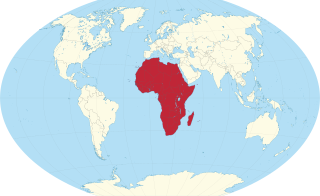| Total population | |
|---|---|
| 17,999 [1] | |
| Regions with significant populations | |
| Paris | |
| Languages | |
| Spanish ·French | |
| Religion | |
| Christianity ·Judaism |
Argentine immigration to France refers to Argentine citizens living in the European country.
Argentina is considered a country of immigrants, [2] especially during the 20th century, but as a result of political, social and economic problems that hit the country in recent decades, many Argentines chose to emigrate, mainly to other countries in the Americas or countries where their parents and/or grandparents came from (mainly Spain and Italy). [3]
The ancestral origins of the Argentine nation show recent ancestors of generations predominantly as Italians and Spanish, but with strong German, British, French, Native American, Slavic and Semitic components, making most Argentinians able to join the European Union. However, they faced very different legal circumstances that Spain and Italy had long before they joined the EU migration policy, thousands of people a day come to the consulates of Spain to process the new nationality or obtain a visa.
The 2011 census recorded 3,868 Argentine-born people. [4]
The 2012 census recorded 11,899 Argentine-born people. [5]
| Year | Argentine-born population | Other data | Immigrants |
|---|---|---|---|
| 1999 | 3.666 [6] | ||
| 2004 | |||
| 2006 | 12,012 [7] | 3,803 [8] | 9,361 [9] |
| 2007 | 12,159 [7] | ||
| 2008 | 12,316 [7] | 3,820 [10] | |
| 2009 | |||
| 2010 | |||
| 2011 | 3,868 [4] | ||
| 2012 | 11,899 [5] | ||
| 2019 | 14 253 [1] |

The demography of France is monitored by the Institut national d'études démographiques (INED) and the Institut national de la statistique et des études économiques (INSEE). As of 1 January 2021, 65,250,000 people lived in Metropolitan France, while 2,785,000 lived in overseas France, for a total of 68,035,000 inhabitants in the French Republic.

This is a demography of Argentina including population density, ethnicity, economic status and other aspects of the population.

Immigration to Argentina began in several millennia BCE with the arrival of different populations from Asia to the Americas through Beringia, according to the most accepted theories, and were slowly populating the Americas. Upon arrival of the Spaniards, the native inhabitants of Argentine territory were approximately 300,000 people belonging to many Indigenous American civilizations, cultures, and tribes.

According to the French national institute of statistics INSEE, the 2018 census counted nearly 9 million immigrants in France, representing 14.0% of the total population. Eurostat estimated the foreign-born population to be 9.1 million, corresponding to 14.1% of the French population as of January 2019.

The Italian diaspora is the large-scale emigration of Italians from Italy. There were two major Italian diasporas in Italian history. The first diaspora began around 1880, two decades after the Unification of Italy, and ended in the 1920s to the early 1940s with the rise of Fascist Italy. Poverty was the main reason for emigration, specifically the lack of land as mezzadria sharecropping flourished in Italy, especially in the South, and property became subdivided over generations. Especially in Southern Italy, conditions were harsh. Until the 1860s to 1950s, most of Italy was a rural society with many small towns and cities and almost no modern industry in which land management practices, especially in the South and the Northeast, did not easily convince farmers to stay on the land and to work the soil.

The Brazilian diaspora is the migration of Brazilians to other countries, a mostly recent phenomenon that has been driven mainly by economic recession and hyperinflation that afflicted Brazil in the 1980s and early 1990s, and since 2014, by the political and economic crisis that culminated in the impeachment of Dilma Rousseff in 2016 and the election of Jair Bolsonaro in 2018, in addition to chronic violence in Brazilian urban centers.
African immigrants in Europe are individuals residing in Europe who were born in Africa, this includes both individuals born in North Africa and Sub-Saharan Africa.
Emigration from Colombia is a migratory phenomenon that started in the early 20th century.
Immigration to Chile has contributed to the demographics and the history of this South American nation. Chile is a country whose inhabitants are mainly of Iberian, mostly of Andalusian and Basque origin, and Native American, mostly descended from Mapuche peoples. A moderate numbers of European immigrants settled in Chile during the 19th and 20th centuries, mainly Spanish, as well as Germans, British, French, Southern Slavs, and Italians who have made additional contributions to the racial complex of Chile. However, this immigration was never in a large scale, contrasting with mass migrations that characterized Argentina, Uruguay and southern Brazil, and therefore, anthropologically, its impact with lesser consequence. At the same time, some separate cultural aspects, such as German cakes, British afternoon tea, and Italian pasta, were preserved. The fusion is also visible in the architecture of Chilean cities. This intermarriage and mixture of cultures and races have shaped the present society and culture of Chile.
Bolivians in the United Kingdom form a fairly small group, with 3,765 Bolivian-born people living in the UK according to the 2011 Census.

Argentines ; in Spanish Argentinos (masculine) or Argentinas (feminine) are people identified with the country of Argentina. This connection may be residential, legal, historical or cultural. For most Argentines, several of these connections exist and are collectively the source of their being Argentine.

Uruguayans are people identified with the country of Uruguay, through citizenship or descent. Uruguay is home to people of different ethnic origins. As a result, many Uruguayans do not equate their nationality with ethnicity, but with citizenship and their allegiance to Uruguay. Colloquially, primarily among other Spanish-speaking Latin American nations, Uruguayans are also referred to as "orientals [as in Easterners]".

During the period of 1965 - 2021, an estimated 440,000 people per year emigrated from Africa; a total number of 17 million migrants within Africa was estimated for 2005. The figure of 0.44 million African emigrants per year pales in comparison to the annual population growth of about 2.6%, indicating that only about 2% of Africa's population growth is compensated for by emigration.

Spaniards in France are people from Spain residing in France and their descendants. They may be French citizens or non-citizen immigrants or expatriates.

Portuguese in France (Luso-French) refers to people from Portugal who immigrated to or reside in France or French citizens of Portuguese descent.

Brazilians in France number approximately 153,700 and form the largest immigrant group from Latin America in France. Nearly half of them live in French Guiana, including many who have crossed the border illegally.
Tunisians in France are people of Tunisian descent living in France. People of Tunisian origin account for a large sector of the total population in France. Following France's colonial rule in Tunisia from 1881 to 1956, many Tunisians chose to immigrate to France from the 1960s to the present due to France's favorable economic conditions, while others sought to escape Tunisia's unfavorable living conditions. The early 1980s saw a boom of the Tunisian community in France because of adjustments.
French-Moroccans or Franco-Moroccans or simply are French people of Moroccan descent living in France. People of Moroccan origin account for a large sector of the total immigrant population in France. Following the French protectorate in Morocco from 1912 to 1956, many Moroccans chose to immigrate to France from the 1960s to the present due to France's favorable economic conditions.
At the 2011 census, the number of immigrants in Costa Rica totaled about 390,000 individuals, or about 9% of the country's population. Following a considerable drop from 1950 through 1980, immigration to Costa Rica has increased in recent decades.
Latin American migration to Europe is the diaspora of Latin Americans to the continent of Europe, dating back to the first decades of the Spanish and Portuguese empires in the Americas. Latin Americans in Europe are now a rapidly growing group consisting of immigrants from Argentina, Bolivia, Brazil, Chile, Colombia, Costa Rica, Cuba, Dominican Republic, Ecuador, El Salvador, Guatemala, Honduras, Mexico, Nicaragua, Panama, Paraguay, Peru, Puerto Rico, Uruguay and Venezuela. It may also include individuals from certain French-speaking territories depending on the definition of Latin America used.